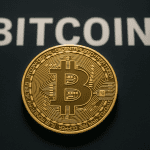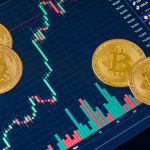XRP Price Struggle Market Analysis
The past few weeks have been rough for the entire crypto market, and XRP has been feeling the impact more than most. Every time Bitcoin goes through a heavy sell-off, the rest of the market tends to follow, and this latest downturn has once again reminded us how closely tied everything is to Bitcoin’s movements. XRP, which has been fighting hard to stay above key price levels, has struggled to hold its ground as Bitcoin’s volatility continues to ripple across the entire ecosystem. It’s a familiar pattern, but this time the pressure feels a little more intense as traders are reacting more emotionally to uncertainties in the broader macro environment.
A big part of XRP’s current situation comes from the domino effect that Bitcoin triggers whenever major sell-offs happen. Bitcoin still controls the flow of liquidity in crypto, and when large holders decide to take profits or minimize risk, it sends shockwaves through the altcoin market. Even strong, established coins like XRP don’t stand a chance when liquidity dries up and traders rush to the exits. This kind of panic-driven reaction is common in crypto, especially when sentiment is already weak, and XRP has unfortunately been caught right in the middle of this emotional wave.
Despite the price decline, XRP’s long-term fundamentals haven’t changed. Ripple continues to expand its partnerships with financial institutions, and the progress made in its legal battles has given it far more clarity than most altcoins. However, when markets become dominated by fear, fundamentals take a back seat. Traders aren’t thinking about adoption, utility, or regulatory wins they’re watching charts, reacting to red candles, and trying to avoid larger losses. This is the kind of environment where XRP loses its footing, not because of weakness, but because sentiment overpowers strategy.
Another issue weighing on XRP is liquidity. Compared to Bitcoin, altcoins naturally have lower liquidity, which means any surge in selling creates sharper and faster declines. XRP has strong trading volume compared to many competitors, but it still gets dragged down when the entire market flips bearish at the same time. With Bitcoin selling happening at scale, miners offloading coins, and macro uncertainty adding fuel to the fire, XRP’s recent drops become easier to understand. It’s less about XRP itself and more about being tied to a market that’s temporarily out of balance.
Even though the charts may look rough, XRP isn’t alone in this struggle. Almost every major altcoin has followed the same pattern: losing key support zones, dropping into oversold territory, and waiting for Bitcoin to stabilize. Technical indicators show XRP moving into oversold zones on the RSI charts, which usually suggests that a rebound could follow once selling pressure eases. The challenge is simply timing markets can stay bearish longer than traders expect, and each new wave of Bitcoin selling pushes recovery a little further away.
For long-term XRP supporters, moments like this are difficult but not unfamiliar. The coin has gone through countless price swings over the years, often bouncing back stronger once the market finds stability. Ripple’s roadmap, expansion into cross-border payments, and institutional partnerships continue to give XRP a solid foundation that separates it from hype-driven tokens. These factors don’t guarantee short-term price stability, but they do lay the groundwork for future recovery once fear fades and confidence returns.
Right now, the market’s biggest problem is uncertainty. Between inflation worries, shifting interest rate expectations, and ongoing global tensions, investors across all markets not just crypto are more cautious. Bitcoin’s recent sell-off reflects that growing caution, and altcoins like XRP are reacting the only way they can: by adjusting downward until the market finds a new balance. This is also why many traders are minimizing their exposure, taking profits early, or avoiding risky moves until things feel safer. The “fear of staying in” has replaced FOMO, creating a cycle of selling that feeds itself.
Still, history shows that crypto markets recover faster than most expect, especially once Bitcoin stops falling and range-trades for a while. When that happens, liquidity returns, traders regain confidence, and altcoins begin to climb back up. XRP has consistently shown strength during recovery phases thanks to its utility-focused ecosystem, ongoing institutional interest, and regulatory clarity that most altcoins simply don’t have. These factors suggest that XRP could rebound more efficiently once the broader market stabilizes.
In the short term, it’s important not to make emotional decisions. Markets go through phases, and this current downturn is more about Bitcoin’s impact than XRP’s individual weaknesses. The token’s fundamentals remain strong, adoption is still growing, and its long-term use case in global payments hasn’t changed. While volatility may continue, XRP’s current struggle is part of a larger cycle that every major crypto is dealing with. Once Bitcoin settles, XRP is likely to regain momentum and rebuild the confidence that has temporarily slipped away.
XRP’s journey is far from over, and this moment of turbulence won’t define its future. It’s simply a pause a reminder of how intertwined the market still is with Bitcoin and how quickly sentiment can shift during uncertain times. As the market moves into its next phase, XRP’s fundamentals position it well for recovery, and its long-term potential remains intact for those willing to look beyond the current dip.
FAQs
1. Why is XRP dropping right now?
Because Bitcoin’s sell-off triggered market-wide fear, pulling altcoins down with it.
2. Does XRP still have strong fundamentals?
Yes, Ripple’s partnerships and legal clarity remain strong despite volatility.
3. Will XRP recover soon?
Most likely once Bitcoin stabilizes and liquidity returns to the market.
4. Is the selling mostly emotional?
A large portion is panic-driven rather than based on fundamentals.
5. Is XRP still good long-term?
Its adoption, utility, and regulatory progress make it strong long-term.




















